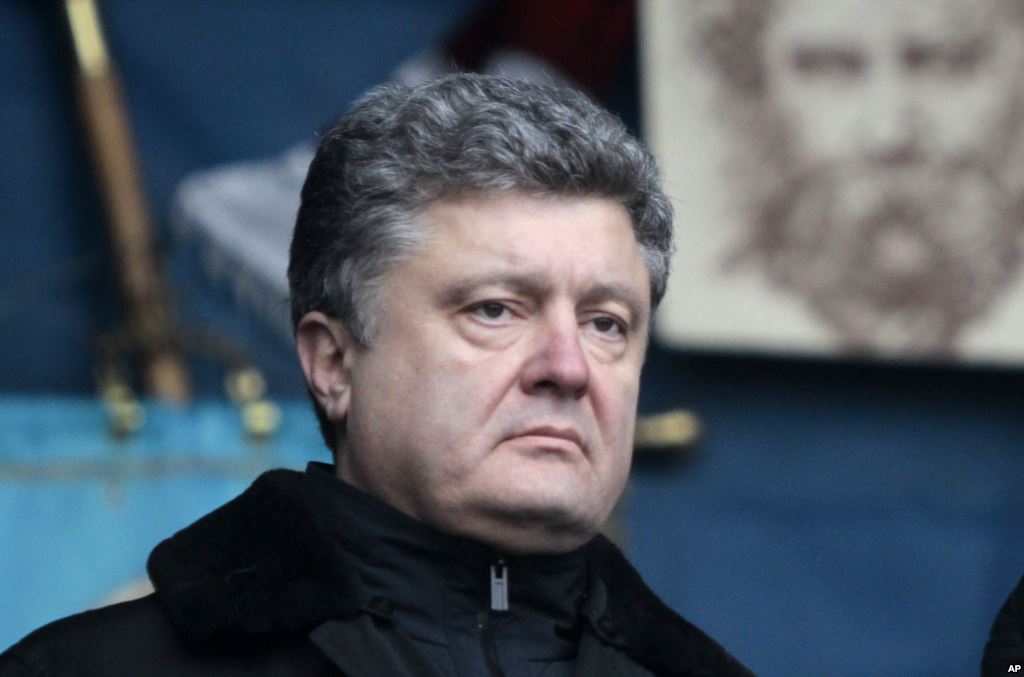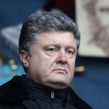
Southeastern Ukraine Unrest and Domestic Politics
Publication: Eurasia Daily Monitor Volume: 11 Issue: 68
By:

The Ukrainian authorities’ initial response to the unrest in the country’s southeastern regions was a mixed one: Pro-Russian protesters were able to seize the regional administration buildings in Donetsk and Kharkiv as well as the Security Service (SBU) offices in Donetsk and Luhansk on April 6. But the self-proclaimed “Kharkiv Republic” was short-lived as elite Ukrainian police units liberated the regional administration building during a 15-minute special operation (https://ru.tsn.ua/ukrayina/u-harkovskih-separatistov-izyali-pistolety-i-6-yaschikov-s-kokteylyami-molotova-359433.html). Thus, the events in southeastern Ukraine differed from the situation in the Crimea where similar seizures of local administrations led to a Russian military intervention.
This difference was, in fact, grasped by several notable Russian analysts. Fedor Lukianov, the editor-in-chief of the journal “Russia in Global Affairs,” thinks that Moscow will provide only ”moral support” to the protesters in southeastern Ukraine and promote the federalization of the country, while political consultant Gleb Pavlovsky believes Russia’s ultimate goal is to disrupt the May 25 presidential elections in Ukraine (https://www.rbcdaily.ru/politics/562949991093494). On the other hand, another influential Russian expert, Sergei Karaganov, argues that “a part of the Russian elite” is championing the maximalist goal of Russia’s “reunification, one way or another, with Ukraine’s largest part.” Nonetheless, Karaganov called this option “unrealistic and unacceptably costly.” Instead, Karaganov would prefer for Moscow to keep Ukraine undivided—with the exception of already annexed Crimea—though a federal state (https://izvestia.ru/news/568861). From this logic, it follows that Russia’s dominant strategy would likely be political, with the military (and economic warfare) elements playing important supporting roles.
Perhaps as a recognition of the failed coup option, Russia is leaning toward a recognition of the Ukrainian presidential elections. On April 8, Russian Foreign Minister Sergei Lavrov suggested that “presidential candidates” from southeastern Ukraine must represent the country alongside the acting government in the multilateral Ukraine–Russia–European Union–United States crisis negotiations (https://www.interfax.ru/world/370191).
The likely presidential candidates’ reactions to the unrest in the southeastern regions are particularly notable. In a recent poll, the candidates with the highest support are Petro Poroshenko (28 percent), Yulia Tymoshenko (13 percent) and Serhiy Tigipko (6 percent) (https://ua.interfax.com.ua/news/political/199933.html). None of these candidates represent the formerly ruling Party of Regions (PR). Tigipko was previously deputy chairman of the Party of Regions, which split after the Maidan protests and Viktor Yanukovych’s fleeing. After complex infighting during caucusing (https://www.theinsider.ua/politics/53387168d0fe2/), the PR chose Mykhailo Dobkin as its official presidential candidate, despite his low public support (less than 4 percent). While Tigipko was expelled from the party for refusing to withdraw his own candidacy. Reportedly, the split reflects the differences among oligarchs Dmytro Firtash, allegedly supporting Tigipko’s parliamentary faction, and Rinat Akhmetov, reportedly favoring Dobkin (https://www.theinsider.ua/politics/534369359bc45/).
On April 7, Dobkin, who also heads the Kharkiv Regional Administration, spoke against separatism and in defense of Ukraine’s unity, calling for “dialogue and compromise” (https://tsn.ua/video/video-novini/mihaylo-dobkin-oharakterizuvav-situaciyu-v-regionah.html). Notwithstanding his dovish stance, the successful law enforcement operation in Kharkiv adds to his “pro-Ukraine” image. Furthermore, as Nezavisimaya Gazeta writes, Dobkin told the Russian media that federalization was, in itself, not a bad idea, but in today’s circumstances not a relevant one (https://www.ng.ru/cis/2014-04-08/1_donbass.html).
Rinat Akhmetov, meanwhile, has skillfully structured his crisis management strategy to appear to “own” the situation in Donetsk: He visited separatists in the regional administration and supported their demands regarding the Russian language’s special status and the region’s substantial degree of autonomy versus Kyiv. Akhmetov also arranged for negotiations and asked the authorities not to assault the blockaded regional administration building (https://news.liga.net/news/politics/1293226-akhmetov_vyshel_k_lyudyam_v_donetske_komu_luchshe_esli_poletsya_krov.htm)
Serhiy Tigipko was also trying to politically capitalize on the unrest in Ukraine’s southeast. On April 8, he visited the radical protesters who seized the SBU building in Luhansk, including the weapons stored there. He denied the authorities’ earlier reports that Russian nationals were among the protesters or that hostages were taken. Tigipko showed sympathy for the protesters, claiming they just supported Ukraine’s federalization. He denied they were separatists or that they requested Russia’s assistance (https://www.facebook.com/Tigipko, April 9). Tigipko’s tactics are somewhat reminiscent of the former opposition’s relations with the more radical Maidan protesters in Kyiv, whereby opposition parties provided a political leadership “umbrella,” but often followed the protesters’ radical moves.
Some large business representatives close to the Party of Regions stood in solidarity with the new authorities in blaming former president Viktor Yanukovych for financing and organizing the unrest. This was stated by the acting head of the presidential administration Serhiy Pashynskiy (Fatherland party) (https://ru.tsn.ua/politika/pashinskiy-zayavil-chto-separatistov-na-vostoke-finansiruet-yanukovich-359460.html) and also by co-owner of Ukraine’s largest refrigerator manufacturer NORD (highly dependent on the Russian market) and PR member Volodymyr Landyk (https://www.unian.net/politics/905494-vladimir-landik-v-luganske-terakt-i-ego-nujno-jestko-podavit.html). But unlike Tigipko, Landyk called the southeastern protesters “terrorists” and even suggested there were about 30 Russian soldiers among them.
A politically strong response was staged by Yulia Tymoshenko, the most pro-active presidential candidate of the former opposition to Viktor Yanukovych. Tymoshenko visited Donetsk on April 7 for meetings with regional players (possibly including Rinat Akhmetov) and staged a press conference at Donetsk airport telling reporters that she would propose a new Budget Code granting the regions “full financial autonomy” and changes to the Constitution providing for local self-government. Tymoshenko also stated she would never abolish the current “regional languages” law in defense of the rights of the Russian speakers (https://www.youtube.com/watch?v=cihSEQLOZ90).
Petro Poroshenko, the current leader in the presidential race, is maintaining a relatively low profile regarding the recent unrest. He commented on April 5 that the protests in southeastern Ukraine had the goal of disturbing the presidential elections. Positioning himself as an “effective political manager,” Poroshenko urged top law enforcement officials to personally visit the troubled regions (https://www.segodnya.ua/politics/pnews/popytka-destabilizirovat-situaciyu-na-vostoke-napravlena-na-sryv-prezidentskih-vyborov-poroshenko-510520.html), which the security agencies have now done (https://dt.ua/POLITICS/yarema-virushiv-do-donecka-parubiy-i-nalivaychenko-do-luganska-avakov-perebuvaye-v-harkovi-141149_.html). Poroshenko also visited Odessa, claiming to have prevented a possible separatist operation there on April 10—the 70th anniversary of Odessa’s liberation from the Nazi occupation by the Soviet Army (https://www.unian.net/politics/905371-v-odesse-opredelenyi-shagi-po-predotvrascheniyu-separatistskih-deystviy-poroshenko.html). So far, however, his official campaign page (https://www.facebook.com/ProgramaPoroshenka, accessed April 9) lacks any comments about the unrest, perhaps signifying that Poroshenko’s campaign has not yet begun in earnest.
The overlapping regional turmoil and the presidential race in Ukraine may push Russian to adopt a strategy of refraining from overt military intervention, while simultaneously painting Ukraine as a “failed state” suffering from poor governance. Meanwhile, covert operations, the threat of invasion and economic coercion will remain in place, putting pressure on all of the candidates. In any case, the option to disturb the elections through further regional unrest might also be in the cards, if and when it becomes favorable for Moscow.




